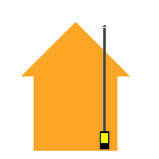Stove hearth size and thickness, UK stove building regs
In Document J, pages 37-42
Stove hearths introduction
The idea of a hearth for a stove is that the stove sits on a slab of something non-combustible that protects the floor underneath from the heat of the stove. If any embers fall from your stove when you open the door then the hearth is there to catch them. The hearth is also a neat way to mark out a zone around the stove which you should keep clear of flammable things, like furniture.
If burning fuel falls from the stove then the hearth should be big enough that it lands on the hearth and not on the floor, carpet, or other combustible material. The edge of the hearth should ideally be at a different level from the floor to clearly show a safe perimeter - you can easily do this by making the hearth higher than the rest of the floor.
The regs say that you can also do this by visually marking a perimeter - so if your whole floor is stone then you might think about installing something like an inlaid metal edge to show the perimeter. With a range cooker a raised hearth right infront might actually be a trip hazard so its worth remembering that you do not absolutely have to have a hearth that's at a different height from your floor.
We can supply a range of stove hearths and floor plates. These are made from slate, glass or resin and are available in a wide variety of sizes and shapes. If you need something a bit different, or the shape needed isn't regular then that isn't a problem we can supply slate hearths cut to whatever shape you need.
Hearth size
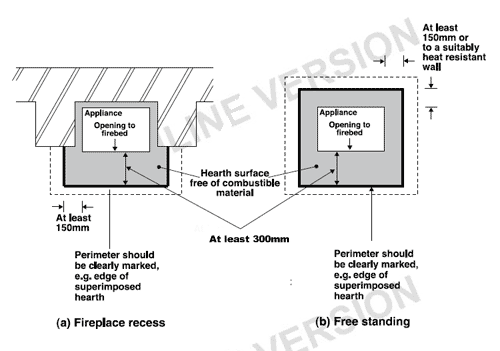
If your stove doesn't heat its base up to more than 100ºC then the hearth can be just 12mm thick. It must extend a minimum of 150mm (6") from the sides and 300mm (12") to the front of the stove.
Technically this 300mm distance can be reduced a little if the stove is not designed to be run with the door open, but in practise just about all stoves can be run with the door open so we recommend just going for 300mm infront of the stove. A wood pellet stove however is rather different.
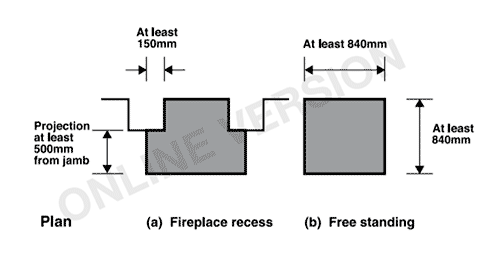
Where the stove does heat its base up to more than 100ºC it has to sit on whats known as a constructional hearth (see below). The size of this is somewhat larger in that if the hearth is in a recess then it must project at least 500mm from the front of the jambs. And here comes the rather unfortunate bit - a constructional hearth is rather thick.
Hearth thickness
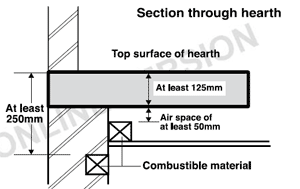
The constructional hearth has to be at least 250mm thick or 125mm thick with a 50mm air gap underneath.
This is a rather massive jump from 12mm and I think its probably designed top cope with open fires and grates where a lot of heat can pass down to the floor. With a stove its unlikely that its heating the hearth up much above that 100ºC figure, but these are the regs we have to work to for the moment.
If the hearth is on a non-combustible floor (for example a concrete floor slab) then the total thickness of the hearth together with the non-combustible floor must be 250mm or 125mm thick with a 50mm air gap underneath.
As already mentioned if a stove does not raise the hearth temperature to over 100 degrees then a 12mm hearth may be used.
Hearths for freestanding stoves
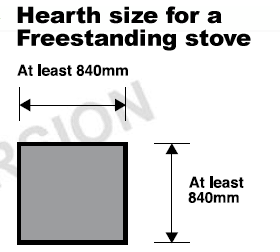
The minimum hearth size for a freestanding stove is 840mm x 840mm, unless the stove is installed in a recess which is worth bearing in mind, especially for smaller stoves.

